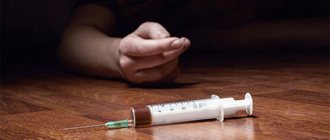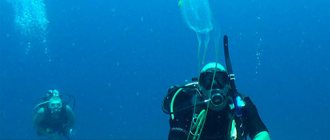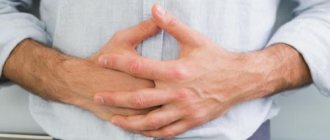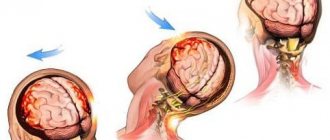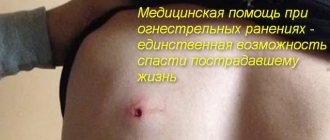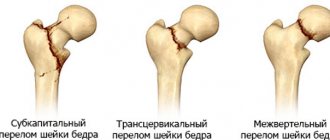A bruise is an injury that damages soft tissue and causes a local reaction in the form of swelling or hemorrhage. A bruise can occur in everyday life, during sports, at work or in transport.
The main signs of a bruise are short-term or intense pain and swelling of the injured area. Over time, the area of the bruise may increase, resulting in an area of secondary damage. When vessels are injured, hemorrhages in the tissue (hematomas) and bruises (bruises) form. During the first two days, pain and swelling may increase, and then a recovery period begins, which takes 2-3 weeks. Complete resolution of bruises may take more than a month. If you receive an injury to organs such as the chest, lower back and abdomen, you must definitely seek medical help to eliminate the risk of internal damage and bleeding.
Timely provision of first aid for bruises is the key to successful treatment and quick recovery. Having received minor bruises, the victim himself can provide first aid. The injured area must be immediately cooled with ice or any cold object. During the first 4–5 days, procedures that increase vascular bleeding are prohibited in the injured area. These include massage, hot baths and compresses.
Providing medical care for various types of bruises
To speed up the resorption of the hematoma, you will need a bandage with a special ointment. The therapeutic compress is fixed with a special bandage. Manufacturers produce dressings that are economical and easy to use. Self-fixing bandages have a number of advantages:
- crepe weaving and micro-dot impregnation with a special adhesive composition ensure precise and reliable fixation of the bandage;
- the initially high cost is compensated by economical consumption - two turns of the bandage are enough to fix;
- 85% stretchability ensures freedom of movement and prevents the bandage from slipping;
- aesthetics. The special bandage is available in different colors; there is no fringe around the edge.
If the bruise is accompanied by capillary bleeding, the standard approach includes antiseptic treatment and bandaging. The modern approach is to use an atraumatic ointment bandage as first aid for bruises. Initially, the wound needs to be treated with an antiseptic and dried. Then apply an atraumatic bandage, which has a number of advantages:
- good air exchange due to the cellular structure;
- antiseptic impregnation that accelerates healing;
- hydrophobic base with ointment, so the bandage does not stick to the wound surface and relieves pain;
- the ointment dressing lasts for 3 days, which reduces the number of dressings;
- Possibility of use for the treatment of children.
If the bruise is accompanied by abrasions, this is fraught with tissue infection and inflammation. Even small damage must be treated with an antiseptic. To do this, you can use an ointment antibacterial bandage. The advantages of this dressing material:
- impregnation acts on gram-positive and gram-negative bacteria;
- the edges of the wound are protected and retain elasticity;
- dressing can be done once a week.
Signs of bruises
The main sign of a bruise is pain in the injured area. Other symptoms of injury:
- hemorrhages as a result of rupture of capillaries;
- hematoma formation;
- the appearance of swelling.
When palpated, the pain becomes more and more intense. Swelling increases over several hours or days. Movement dysfunction is noted. At the time of injury, the pain can be quite intense, but after a couple of hours it decreases.
When the epidermis and subcutaneous tissue are bruised, cyanosis is noted almost immediately. In the case of a deeper injury, a hematoma appears externally in the form of a bruise only after a couple of days. As swelling, swelling and hematoma increase, it becomes difficult for a person to move the damaged part and it becomes difficult to move.
First aid for bruises
Hands
First aid for bruised arms or legs involves applying a tight bandage. Sometimes, when a limb is bruised, joint mobility may be limited. In this case, cold is applied, a bandage is applied and bed rest is provided.
Legs
First aid for foot bruises should include the use of a cold compress or ice and fixation with an elastic bandage. Bandaging must be carried out evenly and tightly, but without interfering with blood circulation. If the pain is very severe, you can take pain medication. The use of cold compresses is recommended on the first day, after which you can move on to warm baths or wraps to reduce pain and speed up the resorption of the lesion. To disinfect abrasions and scratches, it is necessary to treat with chlorhexidine and apply a sterile bandage.
Eyes
In case of eye injuries, the following measures should be taken:
- Apply cold briefly (about 20 minutes) by soaking a handkerchief or cotton wool in water;
- provide the patient with complete rest, do not strain the affected eye, do not turn the head;
- bandage the eye with a sterile bandage;
- Seek help from a qualified ophthalmologist.
Head
As a result of a head injury, a complication can develop - a concussion. Its main symptoms are severe headache, muscle weakness, nausea and dizziness. In this condition, bed rest and urgent medical attention are necessary.
Joints
If a joint in the elbow, ankle or knee is injured, it is worth applying ice to the affected area, fixing the joint in an elevated position and limiting its mobility with a pressure bandage. You cannot perform flexion-extension movements, massage the bruise site, or carry out warming measures.
First aid for severe bruises is carried out in the same way as for minor injuries: apply local exposure to cold, apply a tight bandage at the site of injury and ensure rest. After these procedures, it is advisable to take the victim to a medical facility to receive first aid for bruises.
First aid for bruises includes diagnosis and treatment of the victim, preventative measures and medical rehabilitation, which is carried out by qualified medical personnel.
An important condition for the treatment of injuries is the timely use of measures that will reduce local manifestations (swelling, pain, inflammation). Next, depending on the injury and well-being, the patient is prescribed medication with the following prescription:
- non-steroidal anti-inflammatory drugs - to relieve fever, pain, swelling, inflammation;
- medicines containing heparin - for resorption of bruises;
- vasodilating ointments;
- pain relievers in the form of capsules or tablets - for severe injuries in the first days of receiving them;
- enzyme medications - to resolve hemorrhagic infiltrate, reduce swelling, restore joint function.
In case of skin detachments, multiple injuries, joint injuries, internal injuries, it is important to immediately transport the victim to the nearest medical facility, and in the absence of spontaneous breathing and cardiac activity, perform artificial ventilation and chest compressions with immediate call for an ambulance team.
Folk remedies (recipes) for the treatment of bruises
1) Cabbage leaves have long been used to treat injuries. A fresh and washed sheet should be applied to the site of the bruise, then the whole thing is tightly bandaged with a bandage or any other bandage. Compresses need to be changed every three hours.
2) Baths with salt are excellent in treating not only bruises, but also any skin diseases. To do this, take a bath of hot water and dilute a glass of salt in it. You should not stay in the salt solution for more than half an hour.
Also, daily use of such baths is highly undesirable. Twice in 7 days is enough to normalize the condition of the skin and cure the bruise.
3) Perhaps not everyone knows about such an excellent natural remedy as badyaga . The powder with an unpleasant odor has miraculous properties.
It is made by grinding the skeleton of algae from river sponges, thanks to which a crumbly substance is obtained from small needles. Badyaga is diluted with water and applied to the affected area of the skin, gently massaging.
The needles damage the upper layer of the epidermis, thereby helping to resolve bruises and bruises. This remedy is one of the most effective, and its price at the pharmacy is incredibly cheap.
4) There is probably a homemade aloe plant in every home. Its leaves are thoroughly washed and cut in half, after which the inside is smeared with honey and applied to the wounds.
Aloe leaf juice disinfects well and promotes the regeneration of soft tissues, as well as their speedy healing.
Correctly treating children's injuries
Children are often injured due to high activity. Roller skating, cycling and swinging, even simple outdoor games are accompanied by falls and, as a result, injuries, sprains, hematomas and abrasions. To provide first aid for a bruise, it is advisable to keep several proven means and dressings in your first aid kit.
Minor injuries bother you for a few minutes, and then the child continues to actively have fun. To ensure that infection in an abrasion on a bruised knee or elbow does not cause inflammation, proper treatment is required. A special self-fixing bandage will protect the damage from additional mechanical impact and penetration of pathogens.
If the bruise is accompanied by an abrasion, an antibacterial sterile adhesive bandage or a bright patch with pictures will do. The central section of the bandage and plaster is impregnated with special compounds that promote rapid healing and absorption of oozing fluid from the wound surface.
For very painful bruises, first aid is provided with a hydrocolloid patch. It will relieve pain and promote wound healing by creating an optimal environment. The material absorbs discharge from a bruised wound and protects against infections. After dressing, you can go to a medical facility.
What is a bruise
A bruise is a closed injury to tissues and organs without significant structural damage. Typically, the injury occurs when falling from a great height or being hit by a heavy object. A significant part of the impact is taken by the dermis and blood vessels, which is why hematomas, cyanosis, swelling, abrasions, and superficial wounds are frequent accompaniments of injury. It is especially important to understand what to do in case of a severe bruise, since vital organs may be subject to traumatic effects. The necrotic process can be very extensive.
Absolutely no one is safe from bruises. Children, athletes, and people who engage in heavy physical labor are at risk. Therefore, in order to prevent complications, it is necessary to competently provide first aid for a bruise.
General recommendations for filling a first aid kit
In order for first aid for a severe bruise to be effective, you need to have several effective medical devices and tools on hand. The first step is to quickly get rid of swelling and normalize the flow of blood and lymph. For this purpose, there are compression elastic bandages that do not cause skin irritation. Manufacturers produce products with a cooling effect. This option is much safer than applying ice, since it does not cause frostbite to the tissue and at the same time provides cooling of the bruised area for 2 hours.
In addition to an elastic bandage, it is advisable to have in your first aid kit:
- antiseptic liquid or spray;
- hemostatic agent;
- ointments for bruises and sprains;
- atraumatic ointment dressings;
- sterile gauze or self-adhesive dressings;
- self-fixing bandage.
This list is especially relevant for families with children, since children are often injured. Proper use of special tools will reduce pain and speed up recovery. If the bruise is accompanied by a serious hematoma, deep wound and dangerous injuries, you should immediately consult a doctor. You can handle minor abrasions and bruises on your own.
How to recognize a bruise
The main signs of a bruise are:
- aching pain that becomes stronger over time;
- swelling in the area of the bruise and around this area;
- hematoma (sometimes it can form deep in the soft tissues and can only be felt by palpation).
Bruises can be:
- mild: slight pain, the appearance of a hematoma the next day after injury; minor bruises do not require treatment;
- moderate: with sharp pain and the appearance of a hematoma 3-5 hours after the injury; for moderate bruises, first aid must be provided to relieve pain and reduce swelling;
- severe: severe pain; the hematoma appears quickly, within an hour; blood vessels may be damaged; In case of severe bruises, the patient must be urgently taken to the emergency room or hospital so that qualified assistance can help avoid serious complications.
Consequence of bruises.
Treatment of bruises must begin immediately when tissue damage occurs; as a rule, a bruise is accompanied by characteristic pain. However, if the pain is unbearable, this indicates that the bones are damaged. If the periarticular area is damaged, mobility directly in the joint is maintained until the articular cavity is filled with escaping blood.
The separation of blood due to a bruise may be point-like. It is the abundance of fluid that determines the amount of swelling, the possibility of developing further problems, and also determines the speed of recovery after damage.
General rules for first aid
Due to the bruise, active substances begin to be released in the damaged tissues, which provoke pain, swelling, and an acute inflammatory process. Cold slows down this process, so a cold compress is indicated for injury. Also, when cooling, the capillaries begin to shrink and hemorrhages are observed several times less.
An ice pack is most often used. If there is none, then you can use any product from the freezer, which is pre-wrapped in a towel. Thanks to this, tissue frostbite can be avoided. Apply ice to the sore area for 30-40 minutes. Then take a break for a third of an hour. Cooling procedures should be carried out for 4-5 hours, thereby avoiding swelling and an acute inflammatory process.
It is possible to use cooling lotions. In this case, there are no special precautions. You just need to be patient to regularly replace the napkin with a new one within a few hours.
Providing first aid for soft tissue bruises involves the use of drugs such as:
- Nurofen;
- Ketonal;
- Ketorol;
- Pentalgin;
- Indomethacin and other drugs.
The analgesic effect of these drugs is due to the fact that they suppress the production of bioactive substances that occur in the body when damaged.
In the first few days, take the listed medications constantly, and not only when the pain intensifies. A day after the injury occurs, it is time for heat therapy. Excellent results are obtained by rubbing with warming balms and ointments. Troxevasin ointment has a good effect.
Warming compresses
When considering how to provide first aid for a bruise, it is important to know how to properly apply warm compresses. In order to apply the applique, you will need a mixture of vodka, 5% -0 vinegar and water. Take 1 large spoon of each ingredient. Take a napkin made of 6-7 layers of gauze, a sheet of compression paper and a sufficient amount of cotton wool. If you don’t have compression paper at home, you can use a disposable packaging bag or thin polymer film instead.
Soak rolled up gauze in the mixture, squeeze lightly and wrap around the injured area. Compression paper is placed on top of the napkin. It needs to be crushed a little before use. This way it fits better to the body. The final stage - the compress is wrapped in a layer of cotton wool 1 cm thick.
It is very important to pay attention to the relationship between the edges of the layers that make up the compress. The edges of the paper must overlap the napkins, and the layers of cotton wool must overlap the paper. A not very tight gauze suspension is placed on top of such an application. This compress is left on all night.
Degrees of bruises
Several degrees of injury severity are considered. Taking this into account, you can create a competent treatment plan. Severity of bruises:
- First . This is a mild degree that requires virtually no therapy. No particular damage is observed.
- Second . In this case, muscle tissue is affected, which is accompanied by pain and swelling.
- Third . In addition to muscle tissue, tendons and tissues are also affected.
- Fourth . At this stage, there is severe swelling and damage to internal organs.
In this case, a severe bruise may even turn out to be a closed fracture. Therefore, for diagnosis and medical care in case of a severe bruise, a person must be taken to the clinic.
Types of bruises:
Mechanical damage is distinguished by localization of manifestation. In this case, bruises are identified:
- Soft tissues;
- Heads;
- Backs;
- Necks;
- Chest;
- Periosteal bruises.
Bruises can occur due to a blow from a hard blunt object, falling to the ground, or careless handling of surrounding objects. Mechanical damage is accompanied by slight swelling, the development of a hematoma is observed, and pain is clearly felt.
It is worth recognizing that bruises require treatment depending on the location and the general well-being of the victim. For example, a slight head injury may only be accompanied by the development of a small swelling (bump), which would be more accurately called a “hematoma.” However, if severe dizziness, weakness, loss of consciousness, nausea and other symptoms are observed, we can conclude that there is a possibility of a concussion or bruise. If the spine has been damaged, spinal circulation may be impaired, which affects muscle sensitivity.

